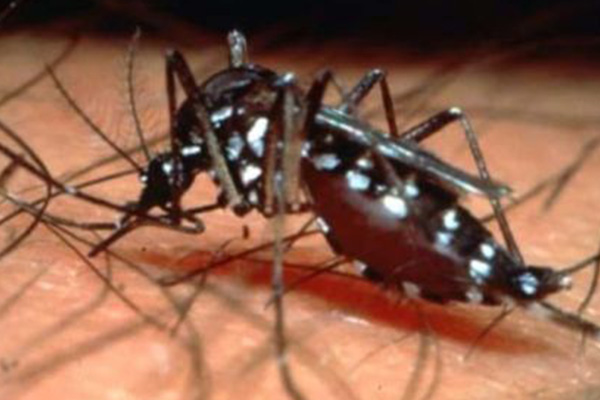St Lucia records spike in chikungunya cases
 Castries, St Lucia — The ministry of health in Saint Lucia says it has noted a spike in chikungunya cases in the south of the island and has reminded the population to be vigilant to preventing possible sources of mosquitoes breeding.
Castries, St Lucia — The ministry of health in Saint Lucia says it has noted a spike in chikungunya cases in the south of the island and has reminded the population to be vigilant to preventing possible sources of mosquitoes breeding.
On May 1, 2014, Dr James Hospedales, head of the Caribbean Public Health Agency (CARPHA), declared that the chikungunya virus has reached epidemic proportions in the Caribbean.
Saint Lucia confirmed its first case of chikungunya in April of 2014 in the village of Anse La Raye. Following that, cases were next identified in communities in Gros Islet and Dennery. Initially, the brunt of the disease was felt in the northern parts of the island. However, after a few months, surveillance reports traced the movement of the disease to the southern parts of the island, from which the majority of new cases are now being identified.
Chikungunya is a viral disease, which is spread mainly by the Aedes aegypti mosquito, which is the same mosquito that transmits dengue fever. Symptoms of both dengue and chikungunya include fever, headache, body aches and pains; but joint pain and joint swelling is more characteristic of chikungunya.
Saint Lucia is in the rainy season and dengue fever is also in circulation and on the rise, though not at epidemic proportions. Dengue fever is endemic in Saint Lucia (implying that cases may be diagnosed all year round). However, due to the increased availability of water and possible breeding sites for mosquitoes during the rainy season, the number of dengue fever cases increases each year in a seasonal pattern, coinciding with the onset of the rainy season.
Given that both chikungunya and dengue fever are transmitted by the same vector (the Aedes aegypti mosquito) it is possible that persons may be infected with both diseases simultaneously. This possibility should be kept in mind, especially in children, adolescents and young persons, who develop signs of febrile illness. As such, parents should ensure that children are brought in for review at a health centre or other medical facility, should any sign of dengue or chikungunya fever develop.
In order to decrease the burden of mosquito borne disease residents should ensure that there are no breeding places for mosquitoes, in and around homes. Drums, tanks and other water receptacles should be properly covered. Persons should wear long sleeved clothing to prevent mosquito bites. Insect repellents can be used on the skin and insecticides may be used sparingly in the home.
The ministry of health continues to encourage community clean up campaigns and similar actions to rid surroundings of potential breeding sites for mosquitoes. The Environmental Health Department will continue its “fogging” operations especially in affected communities, but this should not be the sole or primary means of destroying mosquitoes.
Paracetamol or panadol is the main “painkiller” prescribed for chikungunya. However, if on examination of a patient, a medical practitioner is satisfied that the patient does not have dengue fever, other pain medications can then be prescribed. It should be noted that other more potent painkillers are contraindicated in someone who has dengue as it can lead to complications such as bleeding. Persons are reminded that it may be difficult to distinguish between these two diseases and co-infection is possible, so self treatment with medications other than paracetamol should be avoided. Again, children, adolescents, pregnant women and elderly persons, as well as persons suffering from other chronic diseases should seek care early from an approved practitioner, rather than self treating at home.
People can only get infected with chikungunya once. It is believed that one develops lifelong immunity after an infection. This situation differs though with dengue as there are four or five known dengue fever serotypes, so technically a person may get infected with dengue on more than one occasion.
Chinkugunya and dengue fever can be prevented by destroying the mosquito vector that spreads this disease, as these diseases are not airborne.

